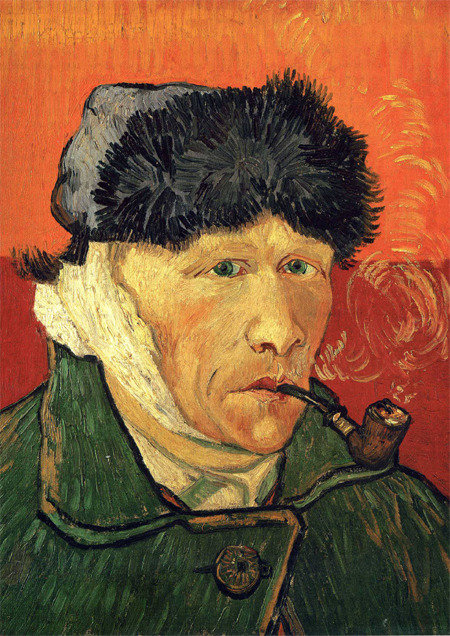What happened at the night when Gogh cut his ear
What happened at the night when Gogh cut his ear
Posted June. 03, 2017 07:07,
Updated June. 03, 2017 07:14

History only remembers as a grotesque accident when Gogh sliced his ear on Dec. 23, 1888. The accident, which was briefly covered on a local paper at that time, further labeled his art career; an image of an insane artist enslaved by schizophrenia and compulsion.
The British author who immigrated to France started to write this book with very simple but unorthodox questions; "How much of his ear covered in dressing on his portrait did Gogh slice?" "Why did Gogh sent his sliced ear to the prostitute?" Until now, these questions remained unanswered despite years of research by art historians.
On the face of it, those questions indeed seem mediocre, but the author approached the questions with surprisingly thorough problem-solving method. To fully understand Gogh's behavior, the writer gathered personal information of 15,000 neighbors living in the 1880s. In addition, the writer interviewed the descendents of the female known as the prostitute and the neighbors. The author even digged through piles of the late-19th century official documents. Furthermore, around 800 letters corresponded between Gogh and his brother and acquaintances were analyzed.
During the research, the author found out that most of Gogh's ear except a small proportion of earlobe was cut. This is quite the opposite to the existing thought argued by several art experts who say that only a piece of Gogh's ear was sliced. Moreover, the writer went on and discovered that the woman previously known as the prostitute was in fact a day laborer who did chores such as cleaning at brothels. The author argues that Gogh cut his ear to resonate his pain in his own peculiar way with a woman was barely making ends meet. The author wrote in the book that "those simplified images of Gogh's madness are no longer valid. Gogh reached the pinnacles of his creativity by overcoming his schizophrenia, rather than leveraging his mental hardship.
Sang-Un Kim sukim@donga.com







